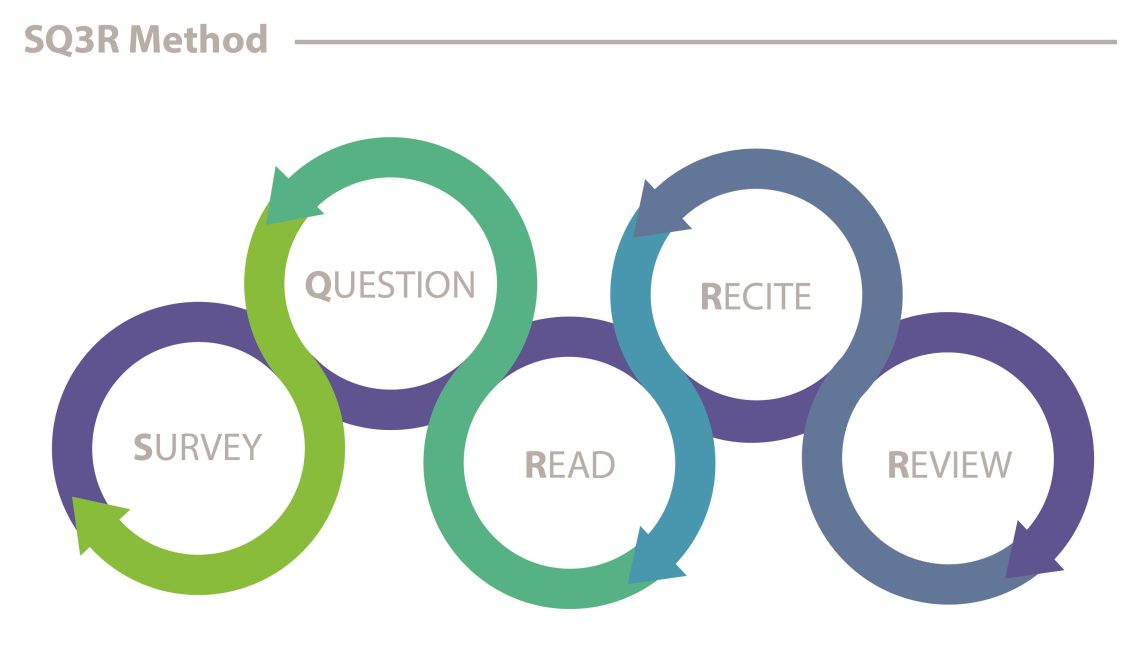
What are the benefits of reading actively?
Have you ever read an assigned chapter or article, and upon finishing it, you say to yourself, “I have no idea what I just read!” This is a common experience, and a huge waste of time! Reading actively will save you time. Just as importantly, it’ll increase your memory of the reading, your understanding of the material, and your overall learning by helping you make connections as you read.
How do I use this approach?
Before you even begin the reading process, take a moment to ask yourself, “Why was this reading assigned?” Your professors select readings intentionally, with specific content and concepts to be covered. By understanding the context or the “why,” the brain will already be looking for the most relevant information. If reading an article or chapter as part of your own research or writing process, ask yourself, “What is it I need to find from this source? How is it connected to my research question or the main idea of my paper?”As you start to read, consider using the SQ3R method, a tried-and-true approach for efficiently tackling college-level material. SQ3R stands for Survey, Question, Read, Recite, and Review.
You can review a summary of the SQ3R method or watch our Reading Actively video below for step-by-step guidance.
Video: Reading Actively with the SQ3R Method
One More Strategy
Annotating is the action of interacting with a text in order to enhance your understanding, memory, and context of the reading. Annotating, or “making notes” on a text, is an excellent way to help you make the most out of the reading. Annotating can be the act of highlighting, underlining, or making notes in the margin of the text. With annotating, you will not only save time, but more importantly, you will make meaning and connections while reading so that the reading becomes more memorable. And since many of the reading materials in USM courses are electronic, consider watching our Annotating Digitally video for how you can use the browser extension Hypothesis to your advantage!
In addition to the active reading process described above, we have one more tip if you are gathering and reading several sources for your research or writing. It can be very easy to lose track of which article or source had what information. To help keep track, consider creating an annotated bibliography. After reading one of your sources, take a few moments to document the name of the source, followed by a brief summary in your own words of the big ideas or takeaways. Taking this step after reading each of your sources will help you save time, make connections between the sources during your research process, organize the information in preparation for the formal writing process, and make meaning of the reading!
Where can I get more information?
Some of the description of SQ3R came from this Wikipedia entry. While not a source we would recommend if writing a research paper, it offers an overview of the SQ3R method, including historical context and links to additional SQ3R resources. For examples of annotated bibliographies, you may want to visit the Purdue Online Writing Lab site. You may also consider meeting with a USM Writing Assistant or Peer Academic Coach for additional guidance.
*Return to the Study Skills & Learning Strategies homepage

